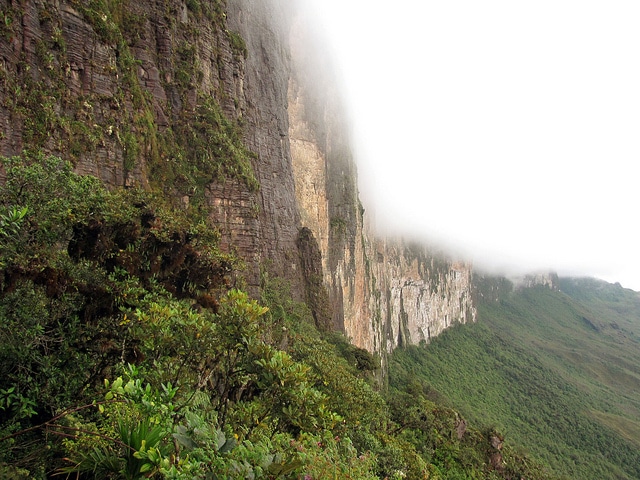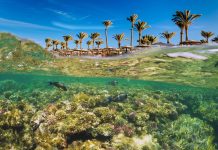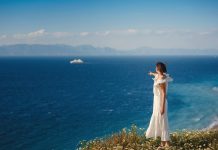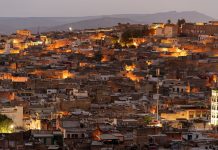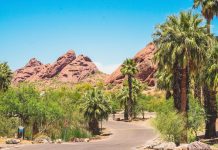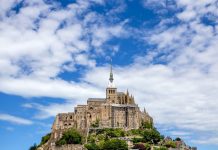I want to briefly describe a simply amazing place in the south-east of Venezuela: Mount Roraima, which is located in the Gran Sabana. This is about a large plateau of around 1000 m above sea level and surrounded by the two major river basins of the Orinoco River (north) and Rio Amazonas (south) as well as inside the Canaima National Park, which belongs to the UNESCO World Natural Heritage. Geologically, the entire area consists of metamorphic rocks formed in granitic Precambrian era, so ancient. About 150 million years ago, the continent of Gondwana began to break and the great mass of water of the Atlantic Ocean separated the African from the South American bloc. The rocks of the Gran Sabana were gradually covered by deposits of sand, compressed, reached a thickness of several thousand meters. This is the origin of the sandstones and quartzites of the features that make the mountains with flat summits, called tepuis by Pemon Amerindian the population that inhabits the area. The etymology is uncertain, the term could mean “home of the gods.” There are more than one hundred of the tepuis in the large region that includes southern Venezuela, northern Brazil and British Guyana, but they are mainly located in the Gran Sabana.
The weather have eroded and shaped the tepuis creating bizarre formations. The tepuis are constantly wet, the rainfall ranges from 2 to 4 feet yearly, and many of them have impressive waterfalls which smooth vertical sides: Angel Falls is the highest in the world, but climbing Mount Roraima, you can admire the waterfall (also among the highest in the world) of the neighboring tepui Kukenán. Roraima itself, with its 2810m is the highest tepui in the area, leaves massive flows of water in the rainy season and so-called tears that refresh climbers. .
At the top you are confronted by a lunar landscape with lifely forms that are largely endemic (Bonnet roraimae) of the region and some meet only here (like the black toad Oreophrynella Quelch). The sheer cliffs hundreds of meters high in fact impose a discontinuity with respect to flora and fauna of the basal parts of the tepui and the Gran Sabana. The same climatic conditions at the top are very different from the base and there is no trace at the top in spite of tropical climate we are in the tropics. The soil is generally rocky and subject to continuous phenomena of run-off, so poor in nutrients. Consequently, the endemics have developed extraordinary survival techniques: for example the Heliamphora has rolled leaves, jar shaped, so as to store water and attract insects that will be digested. This isolated ecosystem, probably remains partly unexplored, a fact that makes it an authentic paradise for researchers.
It was the British explorer Sir Im Thurm, who first, and only in 1884, managed to reach the summit of Roraima tepui. The path is quite hard, for me, the descent was much more arduous than the ascent. The hike starts from the village of Paraitepui and the entire trek (round trip) lasts six days and five nights to spend two admitting the top. This option allows to have available a full day to relax a little and explore the plateau-peak. It really is a minimum time: two days at the top you can also reach the triple point which marks the border between Venezuela, Brazil and Guyana.Independent trekking is not allowed: in Santa Elena de Uairem, a border city between Venezuela and Brazil, you can collect all the information needed to take part in one of the expeditions organized by the local players with Pemon guides.
The waters of these tepuis belong to the basin of the Rio Caroni, which has its source here and in Puerto Ordaz, than it flows into the Rio Orinoco. For miles the waters of both rivers flow separated because of differences in density and chemical composition. The waters of the Caroni, dark due to the high content of humic acids that comes from a geological stand old and poor in nutrients therefore, have little organic particulates in suspension. It does not damage the turbines of large hydropower plants that have been built along the river and produce about 70% of Venezuela’s electricity. Puerto Ordaz is the ideal starting point to explore the Orinoco Delta or go by bus to the Gran Sabana.
By Ina K


